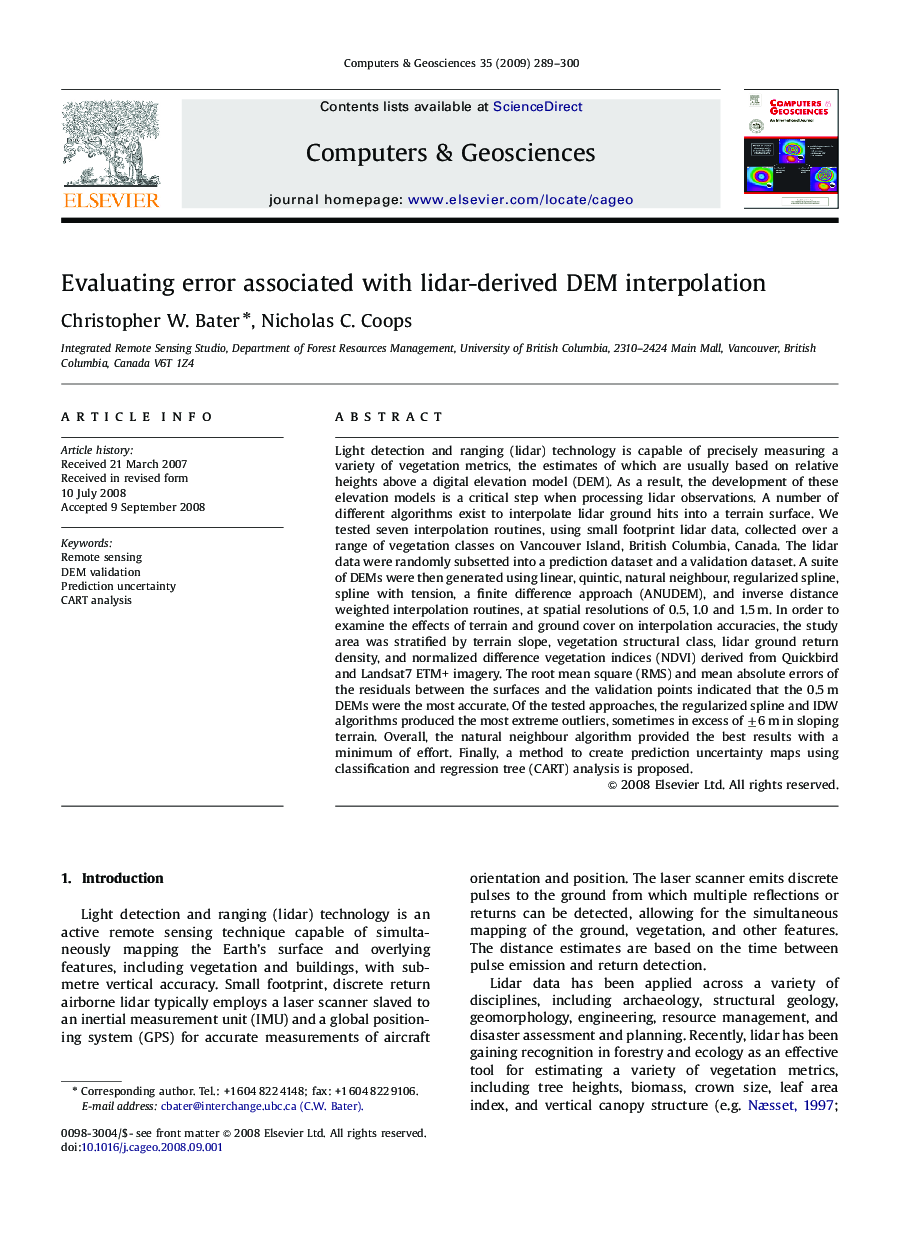| کد مقاله | کد نشریه | سال انتشار | مقاله انگلیسی | نسخه تمام متن |
|---|---|---|---|---|
| 507763 | 865143 | 2009 | 12 صفحه PDF | دانلود رایگان |

Light detection and ranging (lidar) technology is capable of precisely measuring a variety of vegetation metrics, the estimates of which are usually based on relative heights above a digital elevation model (DEM). As a result, the development of these elevation models is a critical step when processing lidar observations. A number of different algorithms exist to interpolate lidar ground hits into a terrain surface. We tested seven interpolation routines, using small footprint lidar data, collected over a range of vegetation classes on Vancouver Island, British Columbia, Canada. The lidar data were randomly subsetted into a prediction dataset and a validation dataset. A suite of DEMs were then generated using linear, quintic, natural neighbour, regularized spline, spline with tension, a finite difference approach (ANUDEM), and inverse distance weighted interpolation routines, at spatial resolutions of 0.5, 1.0 and 1.5 m. In order to examine the effects of terrain and ground cover on interpolation accuracies, the study area was stratified by terrain slope, vegetation structural class, lidar ground return density, and normalized difference vegetation indices (NDVI) derived from Quickbird and Landsat7 ETM+ imagery. The root mean square (RMS) and mean absolute errors of the residuals between the surfaces and the validation points indicated that the 0.5 m DEMs were the most accurate. Of the tested approaches, the regularized spline and IDW algorithms produced the most extreme outliers, sometimes in excess of ±6 m in sloping terrain. Overall, the natural neighbour algorithm provided the best results with a minimum of effort. Finally, a method to create prediction uncertainty maps using classification and regression tree (CART) analysis is proposed.
Journal: Computers & Geosciences - Volume 35, Issue 2, February 2009, Pages 289–300